Barberry Thunberg "Red Pillar": description, planting and care

An excellent decorative decoration for the garden is the columnar shrub of the Thunberg barberry "Red Pillar". Such a plant usually grows in mountainous areas. Barberry was brought to Russia in the 50s of the last century.
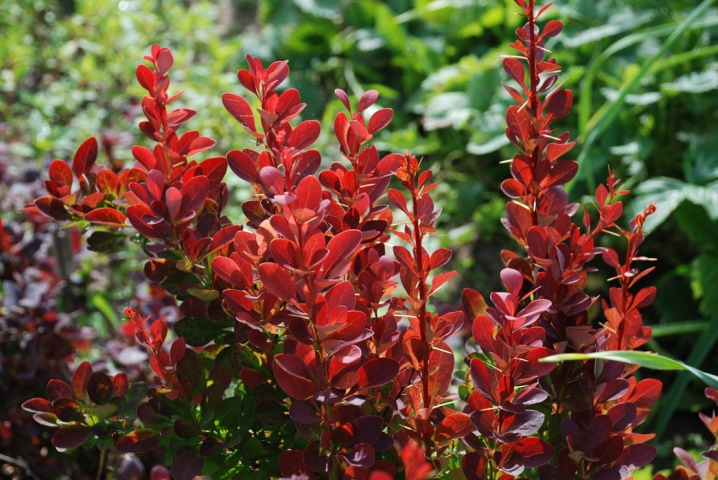
Peculiarities
Thunberg barberry variety "Red Pillar" will grow up to 1.5 meters in height. In diameter, the crown covers up to half a meter. In the process of development, it acquires a thick and spreading shape. The branches of the shrub are straight and strong. Over the year, the increase will be minimal. On the surface of the barberry there are sharp small thorns. Barabris "Red Pillar" gets its name from the color of the leaves. According to the description, they are colored purple-red, and inside the shrub they are darker and have a pale green hue. In the autumn season, the color of the leaves of the barberry becomes golden. Changes in foliage color are influenced not only by the seasonal factor, but also by sunlight. The color of the leaves of the shrub becomes pale when grown in a shaded area. Subsequently, the red-yellow leaves turn green and lose their decorative effect. For this reason, it is recommended to plant Red Pillar barberry only in sunny areas.
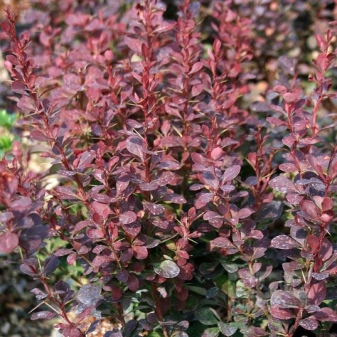

Flowering depends on the climate in the region where the barberry grows. It usually starts in late spring or early summer. Flowers can be either single or collected in small clusters. They are painted yellow, and a red tint is visible on the outside. The fruits of this barberry variety appear in the fall. They have the shape of an ellipsoid and are colored scarlet. Barberry "Red Pillar" is best suited for a temperate climate. Saplings tolerate low temperatures well, however, in the north they may not survive. In cold winter conditions, both young and adult shrubs are covered.
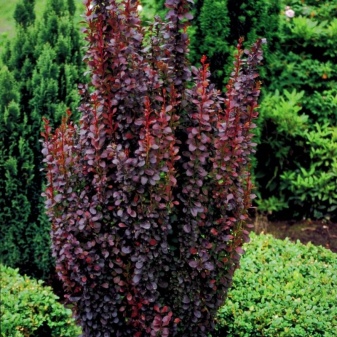
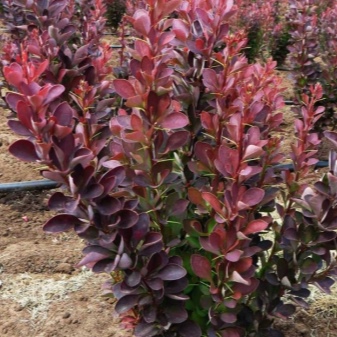
Planting and leaving
Before planting, you need to know that the Thunberg barberry is very fond of sunlight, therefore, it is categorically not recommended to grow a plant in the shade. The decisive factor for the planting period is the climatic position of the region. In spring, shrubs are planted only when the soil has warmed up enough. The minimum condition between seedlings should be 1.5 meters.
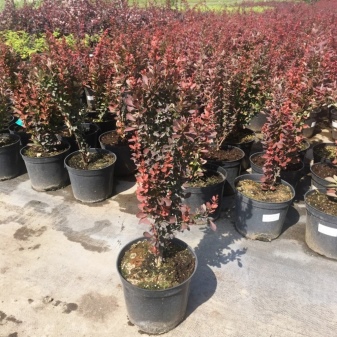
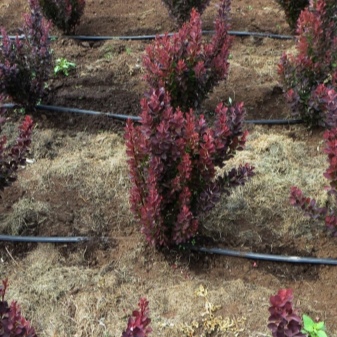
In the case of the formation of a single-row hedge, a single trench is dug, and there are 4 seedlings per seat. For a two-row hedge, holes are made, it is best to arrange them in a checkerboard pattern. 5 specimens are planted in one planting pit. Any soil is suitable for growing Red Pillar barberry. However, acidified soil is best diluted with lime or ash.
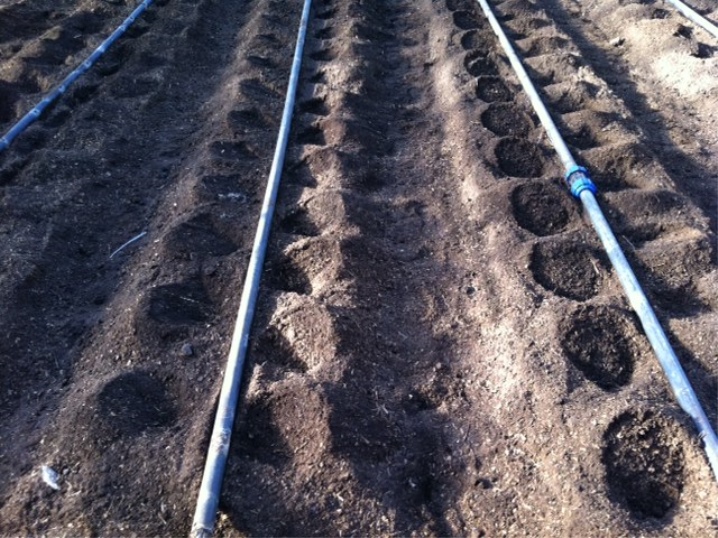
The preparation of the seat is as follows.
- The hole should be 40 centimeters deep and 50 cm in diameter.
- The hole needs to be deepened by another 10 centimeters, if the soil is clayey. Additional space is filled with drainage, usually pebbles are used. You can also use rubble.
- The roots of the seedling are spread over the entire surface, covered with earth, after which the earth is thoroughly tamped.
- The root collar should not be covered; it should be flush with the soil.
- No more than 5 buds should be left on the seedling, and the remaining length should be cut off.
- After tamping, the bush is watered.
- Mulching is performed around the trunk. You can use peat for this.
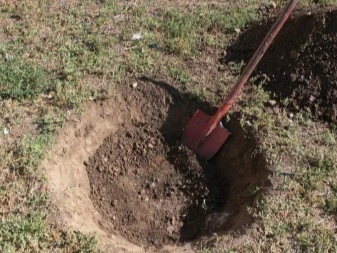

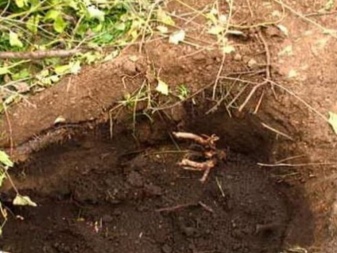
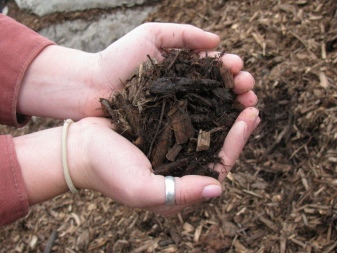
After planting, the plant needs regular watering. It is best to water the bush with warm water, after which the soil should be loosened and mulched. Barberry is fed at least 3 times a year. To maintain decorativeness, spring and autumn pruning is carried out.
Reproduction methods
Like many other cultures, there are several ways to propagate the Red Pillar barberry.
- Seeds. In autumn, fruits are harvested from the bush, preferably before the onset of frost. The seeds are removed from the fruit and washed. After that, clean seeds should be soaked for 30 minutes in a manganese solution. Then you need to dry them and store in a cool place for a year. The next fall, the seeds are planted in open ground, at least 1 centimeter should be deeper. In the spring, the planting must be thinned out. The minimum distance between seedlings should be 3 centimeters. Bushes grow in one place for 2 years, after which they are transplanted to a permanent place.

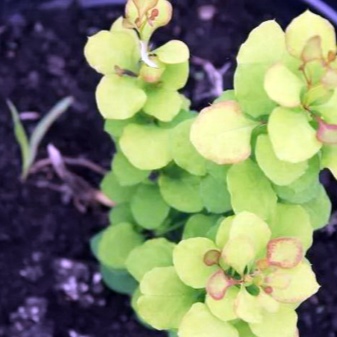
- By cuttings. Shoots up to 15 centimeters long are taken only from adult shrubs. The leaves located below are removed. The upper leaves can be easily shortened. Ready shoots should be placed in a solution of "Kornevin" or other similar preparations. Cuttings are planted in containers and stored in a greenhouse. From time to time it is ventilated, this serves to prevent fungal diseases for plants.
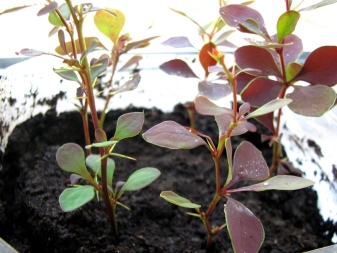
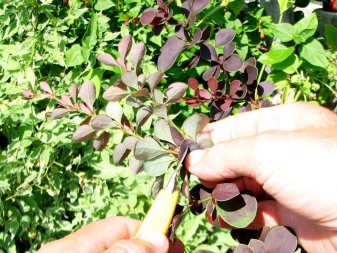
- Layers. It is necessary to select a young shoot and make a small incision on its lower part. A match is inserted into it, after which the shoot is placed in a landing hole 15 centimeters deep. It is advisable to pin the layering with rods. After a year, the shoot is separated from the mother plant and transplanted to a permanent place of growth.
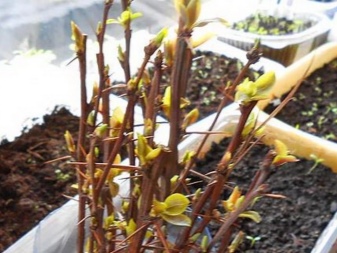
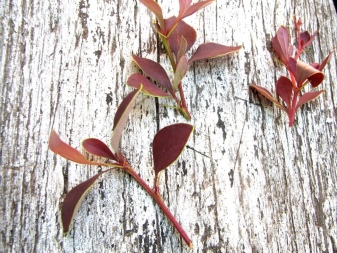
- By dividing the bush. Only an adult barberry is suitable for this method. The plant must be dug up and its roots must be divided. The incisions are treated with a special preparation and transplanted into the open ground.
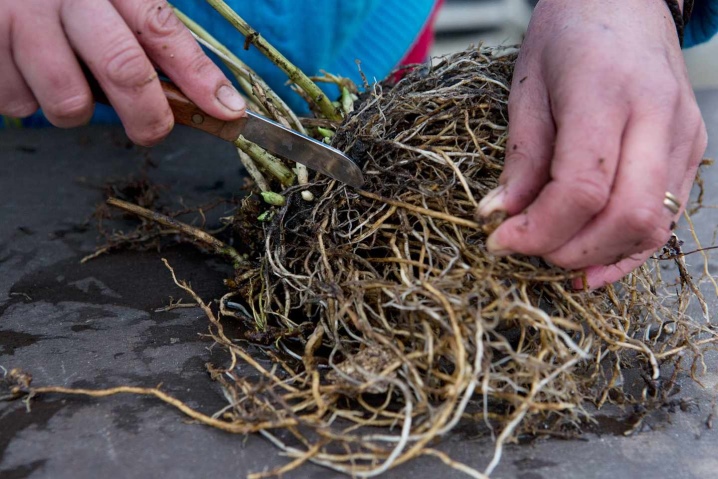
Diseases and pests
Barberry Thunberg "Red Pillar" is quite resistant to various diseases and pests. To protect the plants, it is necessary to prevent shrub diseases and take timely measures to treat them. So, if a fungus appears on the plant, then the barberry should be treated with a special solution. Colloidal sulfur is great. In case of severe damage, the branches should be removed and burned.
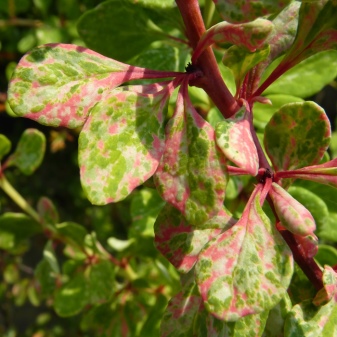
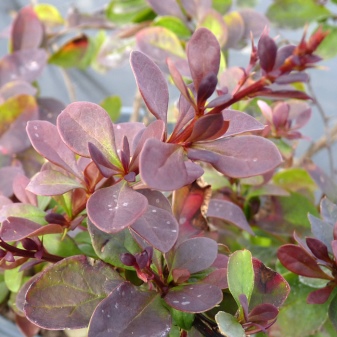
To prevent the plant from being struck by the moth, the shrub is treated with Decis or other similar preparations. Spruce branches will help protect barberry from rodents. In the fall, it is laid out around the bush, immediately after mulching. Aphids can also grow on barberry bushes. This usually happens with improper plant care. In order to prevent the appearance of the pest, the barberry should be sprayed with a soapy or tobacco solution. The procedure is usually performed in the spring season. Thus, in order to avoid various diseases of barberry, it is enough to provide him with proper care, carry out prevention and respond in a timely manner to the disease that has arisen.

Use in landscape design
Barberry "Red Pillar" is actively used in landscape design due to its decorative properties. In the garden, a shrub can be represented in the following form:
- green hedge;
- rockery;
- lawn framing;
- decorative design of flower beds;
- element of a small coniferous garden;
- mixborder element.
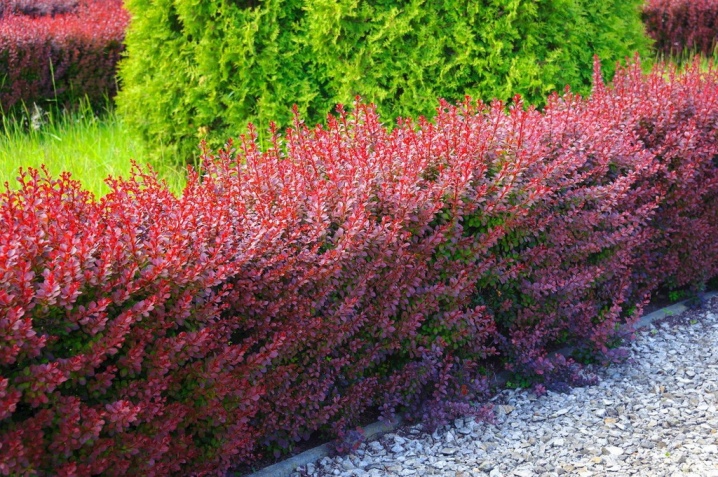
Barberry grows quickly enough, so the result can be seen immediately. In spacious areas, the bush is usually planted in a group planting. In small front gardens, a single planting type is often used. In this case, undersized plant varieties are used. Landscape designers also often use Thunberg's barberry to decorate an alpine slide, as it goes well with stone.
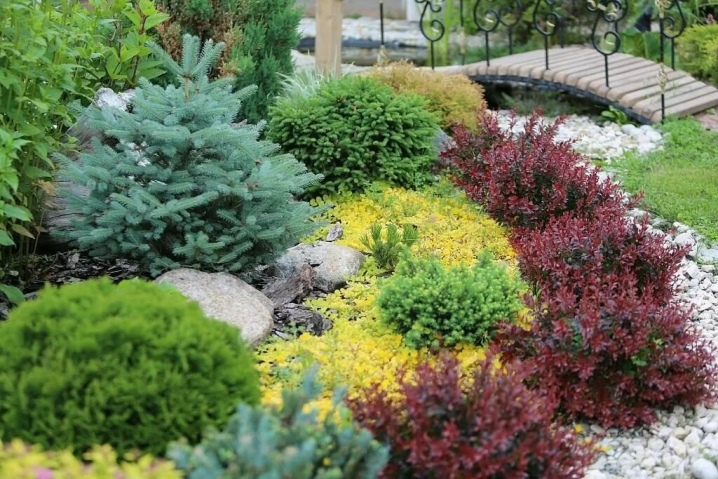
Often the plant is planted in a group planting as a background plant. The main plants can be roses, lilies and peonies. Conifers will also serve as a background for barberry. When the inflorescences fall, bright leaves play the main decorative role. They perfectly complement the three-tier composition. It usually includes flax and cotoneaster. For such landings, it is recommended to select an open and flat area.
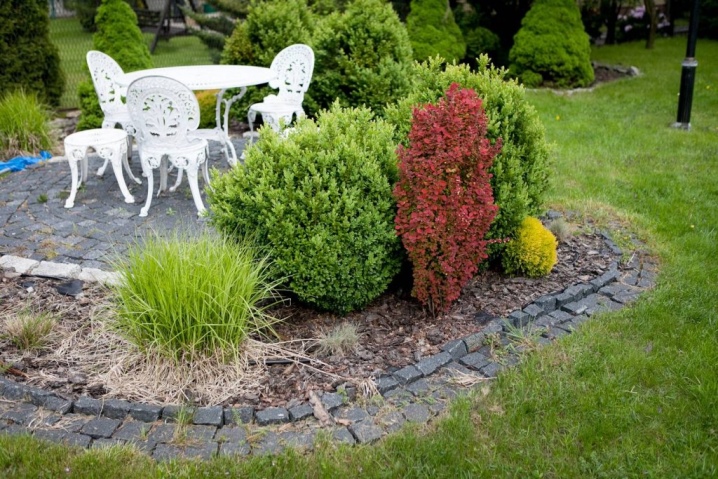
For an overview of the Red Pillar barberry Thunberg, see the next video.



































































The comment was sent successfully.